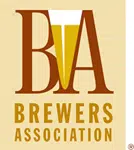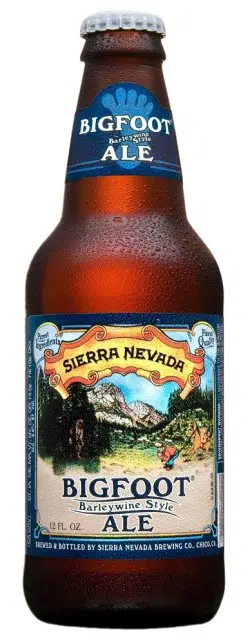The Oldest Barleywine in America!

(The Barleywine Tradition – posted 7:48 pm on 9 January 2013 to the Anchor Brewing website by Anchor Brewing .)
The term “barleywine” has been around for a long time. Some historians have traced it back as far as ancient Greece. Bass & Co. first produced the first Barleywine marketed commercially was first produced by Bass & Co. in 1903. Barleywine is an ale that is characterized by its full body and high strength, usually between 8% and 12% ABV.
Why is it called Barleywine?
Barleywines originated in England and were so named because even though they were made from barley, they approached the alcohol levels of wine. Beginning in the eighteenth century, British brewers began the tradition of producing small quantities of special strong ale. These ales often commemorate a season or event and are aged for extended periods. These products were variously called old ales, stock ales, strong ales, etc. In Scotland, they were referred to as Scotch ales or wee heavies. Some were aged or blended with younger or lower gravity beers. Most have evolved into their own distinct styles in modern times.
Where did Barleywine come from?
Barleywine owes most of its heritage to old ale, giving rise to the common practice of incorporating the word “old” into the labeling. These early strong ales developed some of their unique and rich characteristics from the long aging cycle in wooden casks, much like wine. It’s been suggested that this fact contributed to the name, but there’s little historical proof of this.
What was the First American Barleywine?
“Originally unique to England, the first American Barleywine was brewed by Anchor Brewing Company in 1975, employing the traditional method of using only the first runnings from the mash. In eighteenth- and nineteenth-century English breweries called it “parti-gyle” brewing, where two, or even three, different beers were made from successive runnings from a single mash. The first runnings were used for strong ales or barleywines, and the subsequent runnings were used for weaker or “small” beers. We labeled ours “Old Foghorn” in keeping with the tradition of incorporating the word “Old” in the name, as well as carrying on the maritime theme of Anchor Brewing.”
https://www.anchorbrewing.com/blog/the-barleywine-tradition/
How do Gourmets define Barleywine?
The folks at Food and Wine magazine describe “Barleywine” as…
“The designation is equal parts on the nose and tongue-in-cheek, lending the style, and the beers within it, to the discussion. And Barleywines – as one of the biggest and boldest styles out there – are definitely discussion worthy.”
“First, the inaccuracies: Barleywines are definitely not wines. Wines are fermented juice, and as anyone who has ever tried to juice barley can attest, the grain is pretty liquid-free. Barleywines are very much beers, made of sugars extracted from grains.”
“So why call them “wines?” Well, that’s the cheeky part: The style earned its name based on these beers’ strength and complexity – two things that definitely show similarities to wine.”
https://www.foodandwine.com/drinks/what-barleywine
How Do Beer Professionals Define Barleywine?

The Brewers Association (US) offers the following style parameters:
English-Style Barley Wine Ale
“English style barley wines range from tawny copper to dark brown in color and have a full body and high residual malty sweetness. The complexity of alcohol and fruity-ester characters are often high and counterbalanced by the perception of low to medium bitterness and awesome alcohol content. Hop aroma and flavor may be minimal to medium. Low levels of diacetyl may be acceptable. A caramel and vinous (sometimes sherry-like) aroma and flavor are part of the character. Chill haze is allowable at cold temperatures.”
Original Gravity (ºPlato): 1.085-1.120 (21.5-28 ºPlato)
Apparent Extract/Final Gravity (ºPlato): 1.024-1.032 (6-8 ºPlato)
Alcohol by Weight (Volume): 6.7-9.6% (8.4-12%)
Bitterness (IBU): 40-60
Click here for more information
What is The BJCP definition of Barleywine?

The BJCP offers the following style parameters:
19B. English Barleywine
Aroma: “Very rich and strongly malty, often with a caramel-like aroma. … English hop aroma may range from mild to assertive. … The intensity of these aromatics often subsides with age. The aroma may have a rich character, including bready, toasty, toffee, molasses, and/or treacle notes. Aged versions may have a sherry-like quality, possibly vinous or port-like aromatics, and generally more muted malt aromas….”
Appearance: Color may range from rich gold to dark amber or even dark brown. Often has ruby highlights but should not be opaque. Low to moderate off-white head; may have low head retention.”
Flavor: “Strong, intense, complex, multi-layered malt flavors ranging from bready and biscuity through nutty, deep toast, dark caramel, toffee, and/or molasses. Moderate to high malty sweetness on the palate, although the finish may be moderately sweet to moderately dry (depending on aging). …Hop bitterness may range from just enough for balance to a firm presence; balance, therefore, ranges from malty to somewhat bitter. Low to moderately high hop flavor (usually UK varieties)….”
Mouthfeel: “Full-bodied and chewy, with a velvety, luscious texture (although the body may decline with long conditioning). A smooth warmth from aged alcohol should be present. Carbonation may be low to moderate, depending on age and conditioning.”
History: “Usually the strongest ale offered by a brewery, and in recent years many commercial examples are now vintage-dated. Normally aged significantly before release. Often associated with the winter or holiday season.”
Ingredients: “Well-modified pale malt should form the backbone of the grist, with reasonable amounts of caramel malts. Dark malts should be used with great restraint, if at all, as most of the color arises from a lengthy boil. English hops such as Northdown, Target, East Kent Goldings, and Fuggles. Characterful English yeast.”
Vital Statistics:
OG: 1.080 – 1.120+
IBUs: 35 – 70
FG: 1.018 – 1.030+
SRM: 8 – 22
ABV: 8 – 12+%
Commercial Examples:
19C. American Barleywine
Aroma: “Very rich and intense maltiness. Hop character is moderate to assertive and often showcases citrusy or resiny American varieties (although other varieties, such as floral, earthy, or spicy English varieties or a blend of varieties, may be used). ….”
Appearance: Color may range from light amber to medium copper; it may rarely be as dark as golden brown. Often has ruby highlights. Moderately low to large off-white to light tan head; may have low head retention… .”
Flavor: “Strong, intense malt flavor with noticeable bitterness. Moderately low to moderately high malty sweetness on the palate, although the finish may be somewhat sweet to dry (depending on aging). Hop bitterness may range from moderately strong to aggressive. While strongly malty, the balance should always seem bitter. …”
Mouthfeel: “Full-bodied and chewy, with a velvety, luscious texture (although the body may decline with long conditioning). Alcohol warmth should be present but not be excessively hot. It should not be syrupy and under-attenuated. Carbonation may be low to moderate, depending on age and conditioning.”
History: “Usually the strongest ale offered by a brewery, and in recent years many commercial examples are now vintage-dated. Normally aged significantly before release. Often associated with the winter or holiday season.”
Comments: “The American version of the Barleywine emphasizes hop bitterness, flavor, and aroma more than the English Barleywine and often features American hop varieties. Differs from an Imperial IPA in that the hops are not extreme, the malt is more forward, and the body is richer and more characterful.”
Ingredients: “Well-modified pale malt should form the backbone of the grist. Some specialty or character malts may be used. Dark malts should be used with great restraint, if at all, as most of the color arises from a lengthy boil. Citrusy American hops are common, although any varieties can be used in quantity. Generally uses an attenuative American yeast.”
Vital Statistics:
OG: 1.080 – 1.120+
IBUs: 50 – 120+
FG: 1.016 – 1.030+
SRM: 10 – 19
ABV: 8 – 12+%
Click here for more information
What are the most popular Barleywines in America?
(Click on the names of the Barleywine to know more.)



